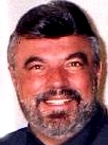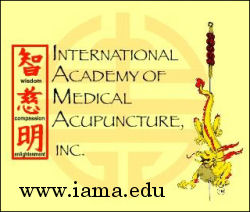Acupuncture & TCM Articles

Acupuncture Articles
by John A. Amaro L.Ac., Dipl.Ac.(NCCAOM), DC
 Dr. Amaro is an internationally known author, lecturer and practitioner beginning his practice of Acupuncture and Chiropractic in 1971. He has led 13 diplomatic Acupuncture study tours of The People's Republic of China escorting more than 500 doctors and practitioners. He has personally studied Acupuncture in nine separate Asian nations. Dr. Amaro is an internationally known author, lecturer and practitioner beginning his practice of Acupuncture and Chiropractic in 1971. He has led 13 diplomatic Acupuncture study tours of The People's Republic of China escorting more than 500 doctors and practitioners. He has personally studied Acupuncture in nine separate Asian nations.
He has received Certification in Acupuncture through the Columbia Institute of Chiropractic in 1973. This was one of the first Acupuncture postgraduate education programs for physicians in North America commencing in 1972.
He has been certified by the Waseda Acupuncture College in Tokyo, Japan in 1974 and graduated from the Chinese Medical Institute, Kowloon, China in 1976. He had previously taken postgraduate studies at the Tai Chung Medical School Taipei, China 1973.
"DON'T GET YOUR FEET WET, YOU'LL GET A COLD"
(THE ENVIRONMENTAL FACTORS OF ACUPUNCTURE)
John A. Amaro L.Ac., Dipl.Ac.(NCCAOM), DC
For those of you who are long time faithful readers of this column in "DYNAMIC CHIROPRACTIC", or who have had extensive study in acupuncture, you have no doubt figured out there are countless laws, rules, points, factors and academic observations to the art of Asian Healing.
One of the most important laws of acupuncture revolves around the Asian "cause of disease". Just like D.D. Palmer stated that disease (subluxation) was caused by poisons, trauma and autointoxication, the Asian cause of disease simply states that disease is caused by internal (emotions), external (environment) or "others". The "others" referred to such things as general constitution, excessive sexual activity in the male, parasites, chemicals, iatrogenic, poisons, traumas, etc. However, the Asian "cause of disease' is very clear, the two most significant factors is emotional and environmental.
I would like to focus our attention on the environmental factors since we are about to enter late fall and winter which is most often associated with an increase in illness to include the infamous "cold and flu season'. Even though what we are about to illustrate seems very easy, please bear in mind to those who are uninitiated in the fine art of TCM, this concept carries with it 3,500 years of empirical statistical data and clinical success.
It would be impossible for "DYNAMIC CHIROPRACTIC" to devote the space necessary to fully explain the concepts of environmental treatment approaches in Traditional Chinese Medicine (TCM) terms without actually publishing a book. What we are about to discuss is not just one simple concept, it is a compilation of numerous academic, theoretical and philosophical concepts, which for the most part could require years of study to fully understand. To explain TAI YIN, JUE YIN, SHAO YIN, YANG MING, SHAO YANG and TAI YANG, could take volumes.
To simplify this concept to its extreme, examine the illustration, notice the bottom picture focusing your attention to the small toe and small finger in what is referred to as TAI YANG (COLD). You will notice that a line is pointing to a point on the small toe identified as BL67 and another identification pointing to SI 1 on the small finger. There is also a reference to KI 12. When health conditions are created or made worse by "cold" such as arthritis, achiness, the common cold, etc. the combination of points of KI 12, BL 67, and SI 1 are some of the most powerful on the body. Unfortunately, space does not allow a full or even partial explanation as to why. Just take my word for it!!!!!!!
The same rule applies to the TAI YIN (DAMPNESS) conditions. These health situations are created by prolonged "dampness". This is a factor which like the others can occur at any time of the year, it is very prevalent in the late fall and winter months when rain, snow, wet feet , wet gloves, are the usual in many parts of the country. Here you will note on the top illustration, a reference to the large toe and the point SP 1 and the thumb with LU 11, an additional point is referred to as LIV 13. These three points are the most powerful on the body for those conditions affected or created by dampness.
The other factor I wish to point out is on the top illustration the reference to JUE YIN (WIND) with its reference likewise to the large toe at LIV 1 and the middle finger at P 9 along with the additional reference to LIV 14, and KI 19. Of all of the environmental factors, wind is without question one of the most damaging. When you suspect your patients conditions are aggravated or created by external wind, the points LIV 14, KI 19, LIV 1 and P9.
There are additional factors for Heat, Dryness and Warmth, however, I think we probably have enough to deal with right now if by going into the winter months, we focus our attention on Dampness, Wind and Cold.
Please understand, even though we were unable to offer the academic reasons and general understandings of these concepts, they are powerful just the same. When it comes to Dampness related situations use SP 1, LU 11 and LIV 13. Wind related problems, LIV 1, P 9, LIV 14 and KI 19.
Cold related problems use BL 67, SI 1 and KI 12.
How many people this year will suffer with arthritis, neck and back pain, cold, flu, chills, and all of the usual and customary conditions we usually associate with winter which could have been prevented by the simple stimulation of the mentioned acupoints. Remember, acupuncture is a principle not a technique, it is not how you stimulate them it is where and if you stimulate them. For those of you who practice in states which do not allow for acupuncture, non-invasive procedure is referred to as "Meridian Therapy".
Remember to heed your mothers advice this winter, cover your head and chest, wear your gloves, and don't get your feet wet!!!!!!!!!!!!!!!!!!!!!!!
|
